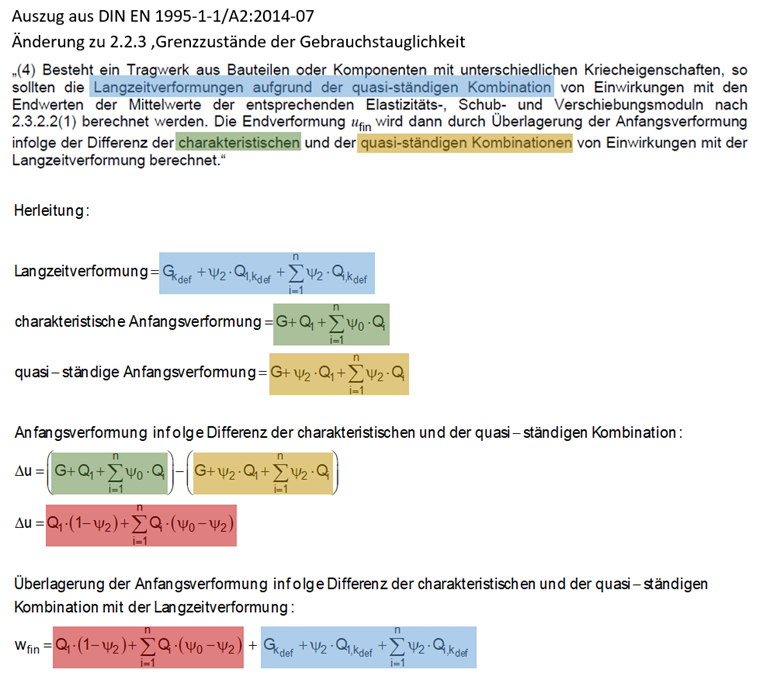In RFEM and RSTAB, the simplified design from [1], Chapter 2.2.3, has been implemented for the automatic load combinations. This means that, strictly speaking, only structures in which materials with identical creep behavior occur may be analyzed with respect to the final deformation, since the creep deformations are taken into account in a simplified manner on the load side. If the structure is a combined structure made of timber with different creep behavior or in combination with steel, the final deformations must be determined according to [2] Amendment to 2.2.3 as follows:
"(4) If the structure consists of members or components having different creep behaviour, the long-term deformation due to the quasi-permanent combination of actions should be calculated using final mean values of the appropriate moduli of elasticity, shear moduli and slip moduli, according to 2.3.2.2(1). The final deformation ufin is then calculated by superimposing the initial deformation due to the difference of the characteristic and quasi-permanent combinations of actions with the long-term deformation."
However, this requires the superposition of results from different load combinations, which cannot be implemented automatically in RFEM and RSTAB. If the different creep behavior should be taken into account, it is necessary to create the load combinations manually, and reduce the stiffness according to the creep coefficient. The procedure is described on an example of a timber-concrete composite floor presented on Info Day 2017. Below this FAQ, you can find the link to this video.
